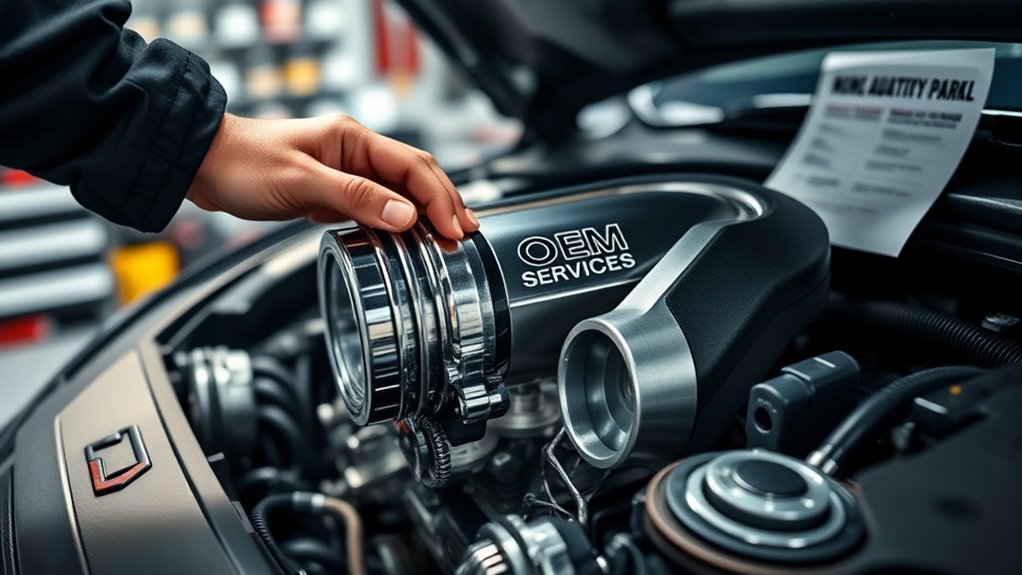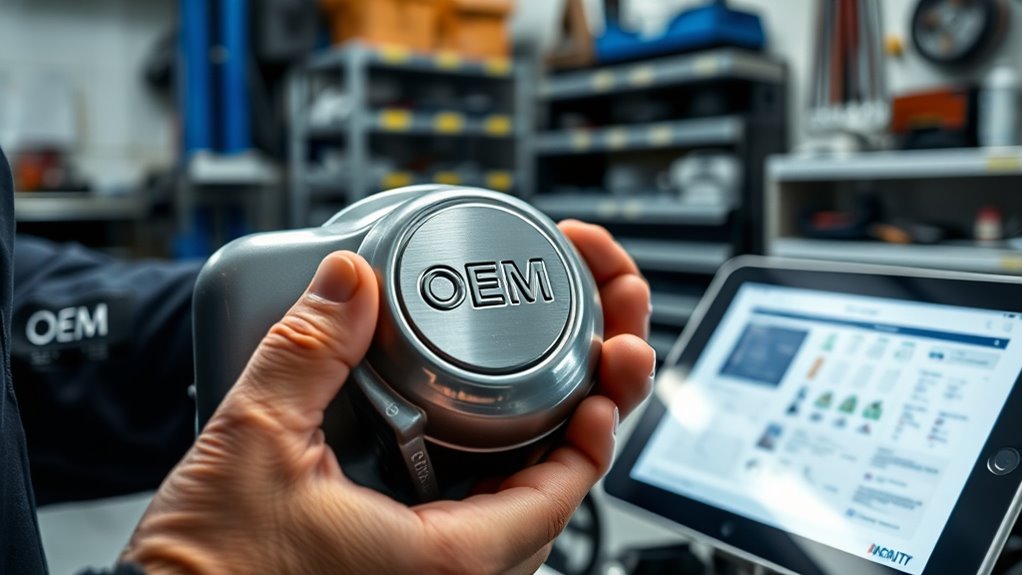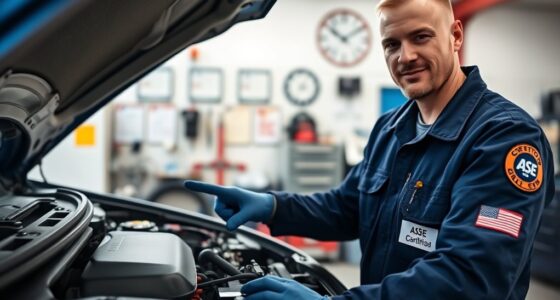Using OEM parts in your service plan guarantees your vehicle maintains ideal performance, safety, and compatibility. These parts are designed specifically for your model, helping to prevent issues that aftermarket options might cause. They also protect your warranty by meeting strict manufacturer standards. Choosing OEM parts supports your vehicle’s long-term durability and safety. Keep going to discover how sticking with OEM parts can save you money and headaches in the future.
Key Takeaways
- OEM parts ensure perfect fit and compatibility, maintaining vehicle performance during service plans.
- Using OEM parts preserves vehicle warranty coverage and prevents potential claim denials.
- OEM parts meet strict safety and quality standards, supporting long-term vehicle reliability.
- Incorporating OEM parts in service plans helps maintain manufacturer specifications and vehicle longevity.
- Relying on OEM parts reduces risks of damage or issues caused by inferior aftermarket alternatives.

Are OEM parts essential in service plans? Many vehicle owners wonder if sticking with original equipment manufacturer (OEM) parts truly makes a difference or if aftermarket alternatives can serve just as well. The truth is, OEM parts are designed specifically for your vehicle, ensuring a perfect fit, reliable performance, and longevity. When you opt for OEM parts, you’re choosing components that meet the exact specifications set by your vehicle’s manufacturer. This precision can make a noticeable difference in how your car performs over time, whether it’s the engine, brakes, or other critical parts. Aftermarket alternatives might seem tempting because they often cost less upfront, but they can sometimes fall short in quality or compatibility. Poorly made parts may lead to quicker wear or even damage to other components, which can be costly in the long run. Utilizing brand-specific parts can help ensure your vehicle maintains its optimal function and safety standards.
A major concern for many owners is warranty implications. Using non-OEM parts can sometimes void parts of your vehicle’s warranty, especially if those parts are the cause of a failure. Manufacturers often specify that repairs or replacements need to be done with OEM parts to keep the warranty intact. If you decide to go with aftermarket alternatives, you risk losing coverage for certain repairs or facing disputes if a non-OEM part causes issues later. This is a critical point to contemplate because the savings from aftermarket parts might be offset by potential warranty costs or denied claims.
Choosing OEM parts in your service plan also means you’re supporting the integrity of your vehicle’s system. These parts are tested and approved by the manufacturer, ensuring they meet strict safety and performance standards. This can provide peace of mind, especially if you’re planning to keep your vehicle for a long time. On the other hand, aftermarket parts aren’t always subject to the same rigorous testing, which can introduce variability in quality. While some aftermarket parts are perfectly fine, others may not meet the same standards, leading to potential issues down the road.
Frequently Asked Questions
How Do OEM Parts Differ From Aftermarket Parts?
OEM parts differ from aftermarket alternatives because they are made by the original manufacturer to meet strict quality standards, ensuring perfect fit and reliable performance. Aftermarket parts are produced by third-party companies and may vary in quality, which can affect durability and compatibility. When you choose OEM parts, you’re opting for proven quality and longevity, giving you peace of mind that your vehicle maintains its ideal performance and safety.
Are OEM Parts More Cost-Effective in the Long Run?
Yes, OEM parts are more cost-effective in the long run because they offer better cost versus quality. While they might be pricier upfront, they tend to last longer and fit perfectly, reducing maintenance costs over time. By choosing OEM parts, you avoid potential issues from aftermarket options, saving money on repairs and ensuring your vehicle remains reliable and efficient for years to come.
Can OEM Parts Be Used in Vintage or Discontinued Models?
Using OEM parts in vintage restoration or discontinued models is like fitting a puzzle piece perfectly. You can often find OEM parts through specialized suppliers or vintage parts dealers, ensuring authenticity and quality. While it might take extra effort, using OEM parts helps preserve the integrity of your classic vehicle. In many cases, these parts are essential to maintain the original performance and value of your vintage or discontinued model.
What Is the Warranty Coverage for OEM Parts?
You get warranty coverage specifics that typically match the OEM parts‘ original guarantee, ensuring reliable protection. OEM parts usually offer better reliability compared to aftermarket options, often coming with longer or more all-encompassing warranties. When you choose OEM, you’re more likely to benefit from manufacturer-backed coverage, giving you peace of mind. Always check your service plan details to understand exactly what’s covered, as warranty terms can vary by manufacturer and part.
Do OEM Parts Require Special Installation Procedures?
Yes, OEM parts often require specific installation protocols to guarantee peak performance. You might think any technician can handle it, but proper training is vital. Skilled technicians follow precise procedures, safeguarding the part’s integrity and your vehicle’s safety. Skipping these steps can lead to issues down the line. So, trust professionals who are trained specifically on OEM part installation, giving you peace of mind and long-lasting results.
Conclusion
Choosing OEM parts in your service plan is like planting a sturdy, reliable tree that stands strong against storms. It guarantees your vehicle remains resilient, maintaining its value and performance. When you trust OEM parts, you’re building a fortress of quality that protects your investment. Don’t settle for anything less—think of OEM parts as the unwavering foundation of your vehicle’s longevity, giving you peace of mind with each mile driven.








